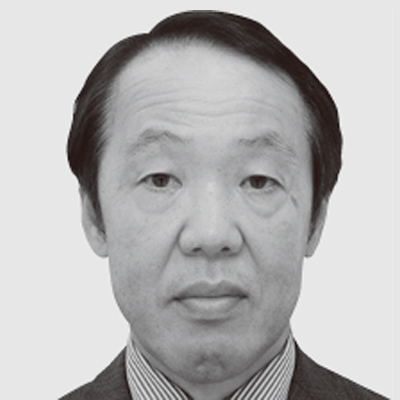Hitachi Initiatives for Creating New Work Styles
Hitachi Group Practices and Lessons
To attain the benefits of work style reform, it is essential to carrying out PDCA cycle activities by setting targets for benefit indicators and identifying current conditions. Using data to assist these activities is key. To eliminate time and location constraints on working practices, Hitachi has been working on transitioning to the cloud and adopting thin clients and infrastructure for global collaboration. Currently, it is using its IoT platform, Lumada, to create an environment that can gather and store various types of in-house data related to work style reform, and provide it to its departments. This article presents some specific examples of tools that support the visualization of work style reform. It presents tools for visualizing the benefits of work style reform, for assessing environmental impact, for improving meeting efficiency, and a tool for visualizing emotions.





IT environments need to be created to achieve work life innovation, but creating IT environments is only a means to an end. Productivity also needs to be improved to help achieve the targeted work style reform. Setting targets and identifying current conditions are essential requirements for attaining the benefits of work style reform, and the use of data for these activities is key.
This article discusses how Hitachi, Ltd. has applied these ideas to the work it has done on creating IT environments and providing data. Presented below are some specific examples of visualizations related to work style reform.
To eliminate time and location constraints on working practices, Hitachi has created environments that support flexible work styles by working on both IT devices and communication environments. Work on IT devices has consisted of adopting thin clients that currently (April 2018) have about 110,000 users. Hitachi’s work on communication environments has consisted of providing infrastructure for global collaboration that currently has about 270,000 users. This infrastructure has enabled the migration of the multiple email systems previously used by the Hitachi Group to a single unified environment. In addition to a general-purpose communication environment for email and scheduling functions, the infrastructure also provides an environment for platform-based and real-time communication (see Figure 1). Global standard products have been set for use on the infrastructure and are provided as common Groupwide services. These efforts are being used to promote team discussions and collaboration across departments and companies to achieve Hitachi’s vision of collaborative creation. As an extension of these activities, it started transitioning to the Microsoft*1 Office 365*1 cloud service in 2016, and the service now has about 100,000 users.
Hitachi uses thin clients as tools for work style reform to provide location-independent desktop work environments available constantly. It also expanded the use of Skype*1 for Business (“Skype”) to the entire company in 2017, encouraged by the earlier use of this real-time communication tool in its IT department, and is using it for remote conferencing.
Figure 1—Creating Infrastructure for Global Collaboration that Promotes Interpersonal Connections “Platform-based communication” means in-house systems that function in a manner resembling social networking services. More than just storage platforms for document files or other resources, they also let users post feedback on stored items by adding review comments or “Likes.” “Real-time communication” means that communication methods enable presence sharing (“What are you doing now?”), instant messaging, teleconferencing, or the like.
“Platform-based communication” means in-house systems that function in a manner resembling social networking services. More than just storage platforms for document files or other resources, they also let users post feedback on stored items by adding review comments or “Likes.” “Real-time communication” means that communication methods enable presence sharing (“What are you doing now?”), instant messaging, teleconferencing, or the like.
As with any reform activity, the first steps needed to attain benefits from work style reform are identifying current conditions and setting targets. The plan-do-check-act (PDCA) cycle is used while checking whether targets have been met. Implementing the PDCA cycle is an essential requirement (see Figure 2).
Through its activities, Hitachi has found that each initiative can be divided into the steps below.
Carrying out Steps 1 to 3 above enables work style reform initiatives to have a positive impact on performance. Attaining the benefits of work style reform requires a clear understanding of the causal relationships above and the steps of each initiative.
Figure 2—Activity Processes for Attaining the Benefits of Work Style Reform For each measure and its hypothesized benefits, the indicators to monitor are set and targets are specified. Each hypothesis is tested as performance is monitored during the operation phase. Attaining benefits by implementing measures requires these types of activity processes.
For each measure and its hypothesized benefits, the indicators to monitor are set and targets are specified. Each hypothesis is tested as performance is monitored during the operation phase. Attaining benefits by implementing measures requires these types of activity processes.
To implement the approach described in the previous section, the Hitachi IT department has been working on creating an environment that can gather and store various types of in-house data related to work style reform, and provide it to other departments (see Figure 3). Initially, data revealing each department’s Skype usage was created and provided to promote the use of that application. This activity corresponds to Step 1 in the previous section. Subsequently, data on overtime work, travel expenses, and printing expenses was provided along with the Skype usage data, providing the ability to assess things like overtime reduction or cuts in travel and printing expenses, corresponding to Step 2 in the previous section. Currently, data on outgoing email and meetings is also being prepared. The analysis corresponding to Step 3 is presented in the next section.
The Internet of Things (IoT) platform Lumada, provided by Hitachi, is being used as the platform for integrating and analyzing the data. The Pentaho data integration/analysis platform is being used as a tool for business intelligence (BI) and data integration.
Figure 3—Providing Data on Work Style Reform Hitachi’s IT department has been creating an environment that provides unified management of work style reform data gathered from attendance management systems and systems such as Skype and Exchange. This environment makes analysis by department or time period easy, and enables correlation analysis for different data sets.
Hitachi’s IT department has been creating an environment that provides unified management of work style reform data gathered from attendance management systems and systems such as Skype and Exchange. This environment makes analysis by department or time period easy, and enables correlation analysis for different data sets.
This section presents four examples of visualizations related to the work style reform efforts being implemented by the Hitachi Group using the approach described in Section 3.
Based mainly in Hiroshima and Fukuoka, Hitachi Solutions West Japan, Ltd. (“HSWJ”) provides information system solution services throughout western Japan. Starting several years ago, HSWJ created a companywide organization for work style reform that has been working mainly on increasing work efficiency. Since work style reform requires more than just cutting total working hours, however, it’s also important to identify how effective reform measures are at contributing to company performance. HSWJ has therefore specified certain key performance indicators (KPIs) for use as metrics of company performance contribution. It is currently promoting the following four measures while implementing PDCA cycle activities:
Of the measures listed above, the benefits of measures (1) and (2) are visualized using the Pentaho-based platform previously described. Two of these benefits are described below.
Productivity improvement centers are staff departments (back offices) that use Skype to process operations efficiently, reducing overtime hours. Figure 4 shows the relationship between overtime hours and Skype call volume.
HSWJ’s sales departments also use Skype to make in-house operations more efficient. Skype has made more time available by reducing time spent on travel and other unproductive activities, enabling more client visits and time for negotiations. HSWJ has used data to study the benefits of this work style reform based on the assumption that a shift in focus from in-house activities to clients will result in a greater number of inquiries and increased orders (see Figure 5).
HSWJ’s system engineering departments are also implementing Skype-based measures designed to improve productivity and reduce costs. While clear quantitative benefits have yet to emerge, promising indications are continually appearing.
Visualizing work style reform benefits in this way is a mandatory requirement since this visualization enables activities for implementing the PDCA cycle.
Figure 4—Productivity Improvement Center (Back Office Department) Analysis The productivity improvement center performs clerical processing for work operations, enabling work volumes to be quantified from the number of processed slips. The work volume was roughly constant during the study period, but overtime hours decreased about 30% from the previous fiscal year as Skype use increased.
The productivity improvement center performs clerical processing for work operations, enabling work volumes to be quantified from the number of processed slips. The work volume was roughly constant during the study period, but overtime hours decreased about 30% from the previous fiscal year as Skype use increased.
To promote environmental management, Hitachi has developed a method called System Integration-Life Cycle Assessment (SI-LCA). SI-LCA is a method of assessing environmental impact (quantity of CO2 emissions) over the life cycle of a system/service product, from design and development to use and disposal. It conforms to the Guideline for Information and Communication Technology (ICT) Eco-Efficiency Evaluationreleased in March 2006 by the Japan Forum on Eco-Efficiency (JFEE; now known as the Life Cycle Assessment Society of Japan).
Work style reform is often approached in terms of improvements in productivity or employee satisfaction level. Identifying the environmental effects of work style reform is another meaningful way to analyze it, and Hitachi has assessed these effects.
Among the work done by HSWJ listed above, Hitachi assessed the following two areas: (1) IT-driven work efficiency improvements, and (2) in-house meeting reform measures. The assessment was done by using the data gathered for these measures, and visualizing the benefits attained from the measures by assessing only the operation stage of each measure.
The benefits provided by IT solutions were assessed by examining environmental impact in seven areas: (1) work man-hours, (2) IT devices, (3) human transportation load, (4) object transportation load, (5) communication data volume, (6) warehouse space, and (7) consumable supplies. Table 1 shows the quantities of CO2 emissions before and after the measures were adopted.
While this assessment is only one example, work style reform is expected to yield environmental benefits in general.
Skype conferencing may only eliminate the transportation needs of a small number of people, and do nothing to change the volume of public transport services or create immediately evident CO2 emission reductions. But it has latent benefits that can be expected to show up as very large contributions in the future.
Table 1—Assessment of Environmental Impact (Quantity of CO2 Emissions) of Work Style Reform Hitachi assessed the benefits attained by the work style reform efforts of Hitachi Solutions West Japan, Ltd. by examining their environmental impact in seven areas. Hitachi found that the difference in annual CO2 emissions before and after the measures were adopted was a decrease of 101 metric tons (5%).
Hitachi assessed the benefits attained by the work style reform efforts of Hitachi Solutions West Japan, Ltd. by examining their environmental impact in seven areas. Hitachi found that the difference in annual CO2 emissions before and after the measures were adopted was a decrease of 101 metric tons (5%).
Hitachi’s Work Life Innovation campaign has also included meeting reform efforts. This included the provision of a meeting efficiency assistance tool in recognition of the importance of communicating meeting objectives and agenda items and of sharing materials beforehand.
Adopted in May 2018, the tool consists of an Outlook*2 add-in and web pages. When attendance requests are sent out before a meeting, the tool displays the meeting participants, time, and location. It indicates the meeting’s objectives, agenda items, and participant roles, shows where meeting materials are available, and indicates the estimated meeting cost. After the meeting, the tool lets the meeting organizer send out the created meeting minutes and To Do lists, and lets participants post feedback about the meeting on a special meeting website. The posted feedback comments are sent anonymously to the organizer for use in organizing future meetings. Stored meeting data can be aggregated and analyzed to visualize the meeting trends at each workplace.
As part of the practical training for an agile development project for new employees, Hitachi’s IT Services Division has developed a tool for visualizing emotions. The tool went into operation in February 2018. Six team members worked over six 2-week sprints (3 months) to develop an application that supports cloud-based mobile use.
Emotions are known to have a major effect on both individual and workplace performance, making emotion management an increasingly important area. The tool lets the user face, recognize, and express (enter in the tool) their own emotions, letting them properly distance themselves from, and manage those emotions. Personal emotions can also be shared among a team, promoting feedback among team members and improving engagement. A 3-point rise in the “Engagement” item in the annual employee satisfaction survey serves as the KPI indicating the tool’s benefit. Member tool use is voluntary and unforced, since psychological resistance to entering and sharing candid emotions on the tool is naturally to be expected.
Starting the tool on a PC or mobile terminal displays a screen for entering the user’s current emotional state. Users can select “Good,” “Average,” or “Bad” and enter a text description of up to 140 characters in length. Entered information can be shared among the team members and aggregated for analysis (see Figure 6). The application architecture uses SharePoint for development of the data storage platform, and PowerApps*3 for development of the input/sharing and team creation management functions. Analysis results are displayed using Power BI*3 (see Figure 7).
Figure 6—Overview of Tool for Visualizing Emotions  The application can be used on a PC or mobile terminal, and enables users to enter their emotional state and view the entered states of team members. A portal site is used for functions such as providing information on operational conditions and gathering request information. Report screens with aggregated and analyzed data from the application are also provided.
The application can be used on a PC or mobile terminal, and enables users to enter their emotional state and view the entered states of team members. A portal site is used for functions such as providing information on operational conditions and gathering request information. Report screens with aggregated and analyzed data from the application are also provided.
Making effective use of in-house and outside data is an essential requirement for business growth in this era of digital transformation. The same applies to work style reform, where the use of relevant data can influence whether activities succeed or fail.
While Hitachi’s initial work on visualization was limited to areas such as work, email, and meeting conditions, it would like to start using a wide range of data that extends to core business areas such as sales and design. Hitachi’s work style reform efforts are being promoted at its @Terrace flagship satellite office, which has already started acquiring data using IoT sensors. More information is provided in the article “Analysis of Office Activity Levels Using IoT Sensors and How to Use it to Get the Best from Corporate Real Estate” on p. 124 of this issue. By creating a data lake containing relevant data from a variety of areas, Hitachi will continue making effective use of data while also working on convenience improvements.